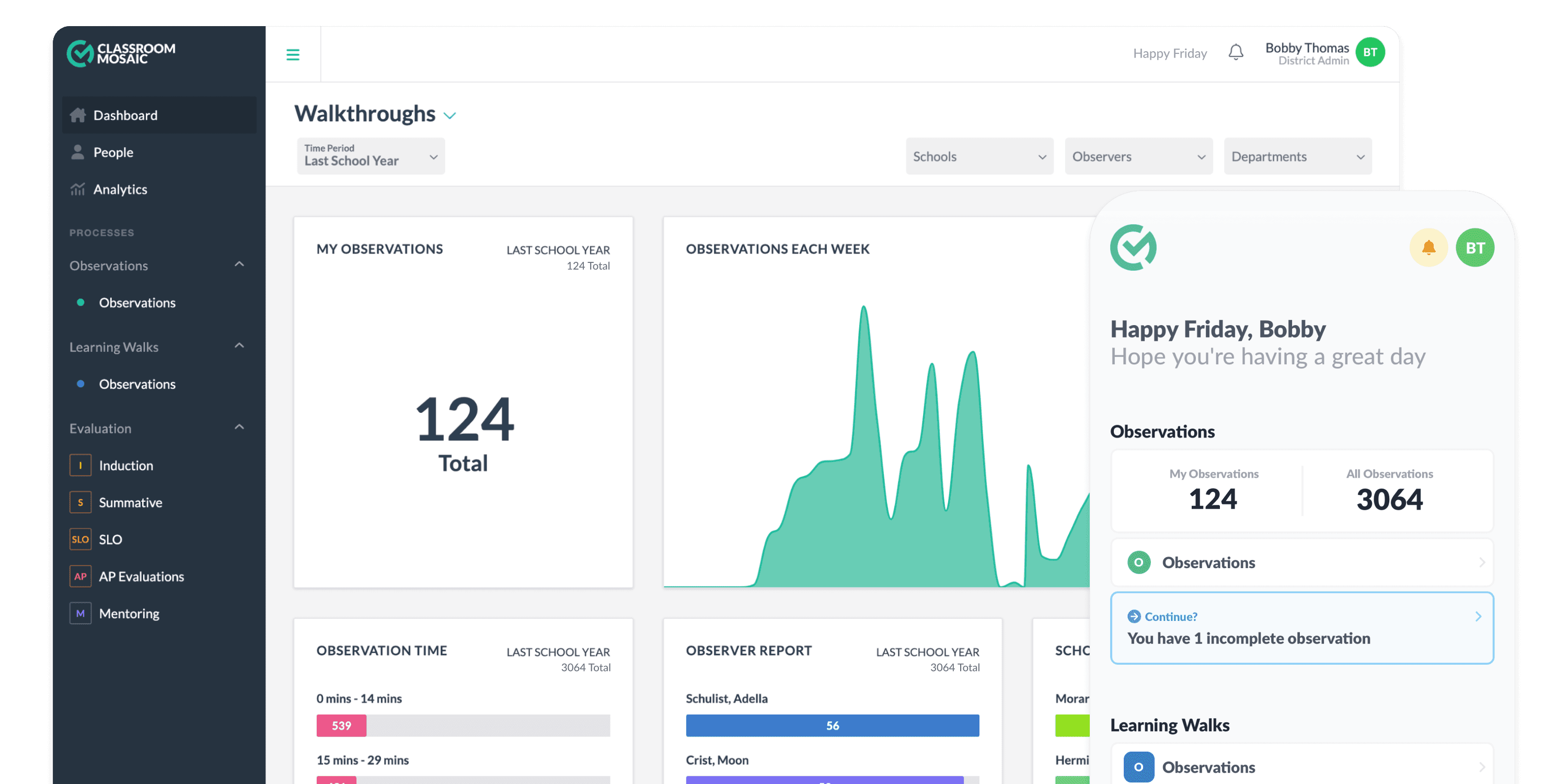Conder Elementary
This form covers Classroom Environment, Classroom Management, Instruction, Higher Order Questioning, Student Engagement, Assessments, Technology, and Lesson Plans
Mosaic
The teacher observation form is a tool used by instructional leaders to assess various aspects of a teacher's performance during a lesson. The form is divided into several sections, each focusing on a specific area of observation. These sections include Classroom Environment, Instruction, Higher Order Questioning, Student Engagement, Assessment(s), Technology, Lesson Plans, and Summary.
The form begins by identifying the observation point, whether it is at the beginning, middle, or end of the lesson. It also requires the observer to note the class gender, grade level, and subject being taught.
The Classroom Environment section assesses the purposeful design of the classroom, the sense of community within the class, and the presence of clear classroom procedures and management.
The Instruction section focuses on the type of instruction observed, whether it is arts integration or AVID, and whether the content is meaningful and aligned with standards. It also assesses whether differentiated instruction is evident.
The Higher Order Questioning section evaluates the teacher's use of higher-level questioning techniques to promote critical thinking and student engagement.
The Student Engagement section assesses whether the students are academically focused and whether collaboration is evident. It also evaluates whether students have the necessary group skills to be productive and whether they are encouraged to reflect on team dynamics and effectiveness.
The Assessment(s) section evaluates the use of assessments during the lesson and whether additional assessment information is available. It also assesses whether students will share their product or performance with their peers.
The Technology section evaluates the use of technology during the lesson.
The Lesson Plans section assesses whether a lesson plan is available, whether standards are present, and whether the lesson plan is congruent with the activity observed.
Finally, the Summary section allows the observer to provide feedback on the lesson observed and any notes they have taken.
Overall, the teacher observation form is a comprehensive tool that allows instructional leaders to assess various aspects of a teacher's performance during a lesson.
Sections:
Classroom Environment
Instruction
Higher Order Questioning
Student Engagement
Assessment(s)
Technology
Lesson Plans
Summary
Start Observing Today
Transform observations into a powerful tool to improve instructional practice.
- Full access to all features
- No credit card required
- Cancel at anytime



